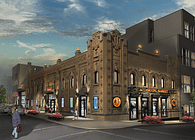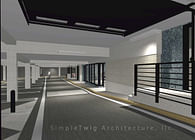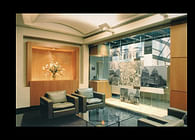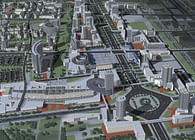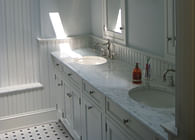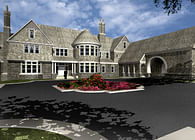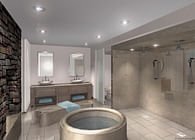
Brooklyn, NY
Working with Director Kurt Masur of the New York Philharmonic Symphony Orchestra at Lincoln Center, for the complete redesign of the stage to integrate a new acoustical approach to the performance platform in order to 'mix the sound' and provide performers with feedback for themselves and others on stage.
Mr. Buccalo was charged with running this project from beginning to end including design, construction documents and administration. The only other team member was Zbig Obrenbowski who pulled the drawings into CAD, the process lasting 3 months including receiving bids and choosing 2 contractors, and 3 months during the summer to ensure it was ready for performances for the fall season.
The structures, composed of high quality maple, were backfilled to prevent unwanted vibration, have some unique features. First is the integration of brass lighting fixtures echoing the main hall fixtures. Second is the steel structure and cabling system that while hidden, provides the main support for all the structures. The third feature are the glass panels, from above suspended in an oval shape to evenly reflect sound to both the audience and performers. The glass continues on the side 'pillows' which have the ability to retract, to allow for finer adjustment. The fourth, and undoubtedly the most recognized part of the design are the wood structures themselves, assembled with such finely grained maple that one barely understands them as being made from a natural material.
The side wall pillows have 30,000 maple dowels attached to their sloped and stepped surfaces, cut in a julian slope to match the slope of the panels, allowing them to appear horizontal yet parallel to the panels, and as such designed to ensure a mixing of sound in all directions due to their round shape.
All the shapes and surfaces create a variety of junctures that reflect sound to both the audience and back to the performers. It is the careful placement of each angle that enhances the sound experience, thus the side panels Mr. Buccalo referred to as pillows for their gentle curved front.
There are two suspended structures, the 'oval' main structure stepped for reflection and to echo the stage ceiling, and a rear structure that acts as a forward reflector to enhance the depth of sound to the audience. It should be understood that to add richness and depth to sound, it must be reflected to the ear of the observer at different increments of time, and it is in this way that the stage design achieves its given goal, both through variety of reflective (and bouncing) surfaces, and through the reinforcement of direct sound. While at the same time, offer performers the ability to hear from the right stage, those playing on the left stage. Together, one must compliment Director Kurt Masur for understanding what was missing and what needed addressing for bringing this project to life, serving Lincoln Center now for some 25+ years.
Status: Built
Location: New York, NY, US
Firm Role: Project Architect, Project Designer, Project Administrator
Additional Credits: Lead Architect: JBA Architects
Partner in Charge: John Burgee
